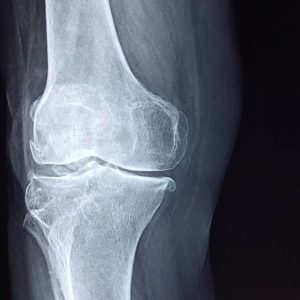What is a joint exactly? Medically speaking, a joint is where two or more bones come together. Like any other part of the body, a joint can be injured. When this happens at work, it’s may be diagnosed as a work-related musculoskeletal disorder (WMSD).
The Main Types Of Joint Injury
Let’s cover the main categories of joint injuries:
Sprains/Strains
 A sprain or strain occurs when the muscles, tendons, and ligaments that hold a joint together and give it stability are overstretched. This can happen suddenly, such as when you fall and land on an outstretched hand. Or it can happen slowly over time, due to repetitive motions that put stress on the joint.
A sprain or strain occurs when the muscles, tendons, and ligaments that hold a joint together and give it stability are overstretched. This can happen suddenly, such as when you fall and land on an outstretched hand. Or it can happen slowly over time, due to repetitive motions that put stress on the joint.
A very common example of a sprain or strain is a sprained ankle. Such an injury is more commonly associated with playing sports, however, these are actually quite common in the workplace.
Tears/Inflammation Of Tendons, Muscles, Ligaments
Most people have heard of injuries like rotator cuff tears or a torn ACL. To state the obvious, the joint is damaged when one of the tendons, muscles, or ligaments is torn, resulting in instability in the joint or the inability to move that joint.
Even if a tear does not occur, following a joint injury, any of the tendons, muscles, or ligaments around the joint can become inflamed. This is called tendonitis (the inflammation of a tendon), myositis (the inflammation of muscle tissue), or capsulitis (the inflammation of the ligaments that hold the joint together). All of these conditions result in pain and loss of mobility in the affected joint.
Fractures
Typically caused by trauma, this is when there is a break, chip, or crack in the bones that are connected in the joint. If a break is bad enough, it can cause serious damage to the surrounding tissues, muscles, tendons, and ligaments. Moreover, if the break is in the weight-bearing bones of the leg or hip, it can cause lasting problems with mobility.
Dislocations
A dislocation means that a bone has moved out of its normal position in the joint. Joint dislocations usually happen as a result of a traumatic injury, such as a work fall or even car accident. The most common dislocation is a shoulder dislocation, but they can happen in any joint.
Joint Disorders
In addition to injuries, there are quite a few joint disorders, such as arthritis, that can be caused or worsened by an injury to the joint. Arthritis is a chronic condition that can gradually get worse over time. While there is no cure, there are treatments available to help manage the pain and inflammation. It’s not uncommon for a patient to have a limited range of motion and chronic pain for the rest of their lives.
Degenerative Joint Disease
Degenerative joint disease is a general term used to describe the gradual deterioration of a joint. This can be caused by many different things, including age, injury, or overuse. As the joint deteriorates, it becomes less stable and more likely to be injured.
How Bad Can Joint Injuries Get?
Just as there are different types of joint injuries, there are also different degrees of severity. A mild sprain may only require over-the-counter pain medication and some rest, while a more serious injury like a fracture may require surgery and a long recovery period.
Dislocations and fractures are usually the most serious type of joint injury, followed by tears or inflammation of tendons, muscles, and ligaments. These usually require some form of medical intervention, whether it’s surgery, physical therapy, or both.
How Are Joint Injuries Treated?
Treatments vary for joint injuries depending on the type of injury and the severity of the injury. Steroid injections, surgery, physical therapy, and medication are just a few of the treatment options available.
- Steroid Injections: For some types of joint injuries, such as tendonitis or bursitis, a doctor may recommend a steroid injection. Steroids are anti-inflammatory drugs that can help reduce pain and swelling.
- Surgery: In some cases, surgery may be necessary to repair the joint. This is usually the case for more serious injuries, such as fractures or ligament tears.
- Physical Therapy: After a joint injury, whether it’s surgical or not, physical therapy is often recommended. Physical therapy can help improve range of motion and strength, as well as reduce pain.
- Medication: There are a variety of medications that can be used to treat joint injuries, including over-the-counter pain relievers, prescription pain relievers, and anti-inflammatory drugs.
The bottom line is, treatments are expensive and patients will have to pay for out of pocket costs even if they have the best health insurance possible. This is during a time where the joint injury is likely limiting the type and the amount of work that can be done. If severe enough, a joint injury can end a career entirely.
If you sustained a joint injury at work you can learn more about how you could recover compensation by clicking here.
